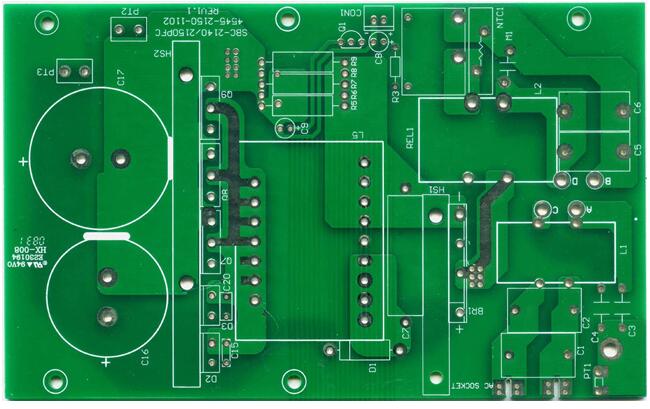2. Appearance problem
Now it is a sign: the color of the laminate is obviously different, the surface color is different, the surface or the inner layer is stained, and there are thin layers of various colors on the surface of the laminate
Available inspection method: visual inspection.
possible reason:
1. The glass cloth-based laminate has white cloth patterns or white spots on the surface before or after PCB processing.
2. After the process of PCB processing, white spots appear on the surface or more glass cloth is exposed.
3. After the process PCB is processed, especially after soldering, there is a thin white film on the surface, which indicates that the resin is slightly etched or there are foreign deposits.
4. The color change of the substrate exceeds the acceptable appearance requirements.

5. As the laminate is overheated or soaked for too long in certain chemical solutions, the appearance of the substrate will have brown or brown markings.
Solution:
1. In very rare cases, the glass cloth is exposed because of the lack of resin on the surface, which is rare today. It is more common to see tiny blisters or small white cavities on the surface. This is caused by the reaction between the coating layer on the surface of the glass cloth and the resin system. A board with a lot of glass cloth exposed, when the humidity increases, the surface resistivity decreases. However, boards with tiny bubbles or small bubbles usually do not drop. Strictly speaking, this is just an appearance problem. Dealing with laminate manufacturers to avoid such problems again; and to determine the acceptable internal standards for small blisters.
2. The majority of cases where the glass cloth is exposed after PCB processing is due to solvent erosion, which removes some surface resin. Check all solvents and plating solutions with the laminate manufacturer, especially the time and temperature of the laminate in each solution to ensure that they are suitable for the laminate used. Where possible, follow the PCB processing conditions recommended by the laminate manufacturer.
3. Inspect with the laminate manufacturer to ensure that the flux used is suitable for the board used. Verify the process that may deposit minerals or inorganics, and where possible, use demineralized water as much as possible.
4. Contact the laminate manufacturer to ensure that any major components or resins of the laminate (they have an effect on the color) are approved by the user before making changes. Sometimes excessive copper alloy transfer will affect the color. Deal with the laminate manufacturer to determine the acceptable appearance range.
5. Check the dip soldering operation, the solder temperature and the dwell time in the solder bath. Also check the ambient temperature of the heating element on the printed board or the entire PCB printed board. If the latter exceeds the upper limit of the allowable temperature of the laminate used, the substrate will produce brown. The plates that have been soaked in certain chemical solutions for too long and high concentrations will only show up when the test plates are heated in the post process. Check the concentration and time of the control chemical solutions.